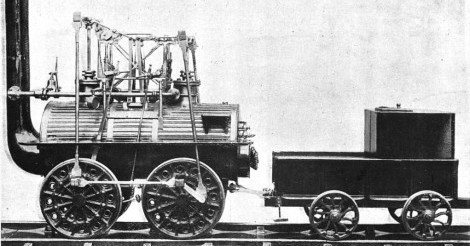
“The Little Engine That Could” is a popular children’s tale, clearly intended to impart a lesson about the power of positive thinking. Through self-encouragement, a small locomotive is able to pull a train up a tall, steep mountain he originally believed to be insurmountable. If you just believe hard enough, kids, you can do anything!
The physics of the story may be a bit dubious, although it is plausible that the work required to haul that train up that track is near the rated limits of the locomotive, allowing for genuine uncertainty about its ability to complete the task. According to this New York Times op-ed, the psychology may actually be the element that merits the most scrutiny. A purely Pollyannaish perspective is actually counter-productive; we need an equal measure of self-doubt to properly analyze our problems and identify solutions.
The proposed explanation, that visualizing nothing but easy success lulls us into complacency, is compelling. It is consistent with the observation that starting a project is easy, but finishing them is hard. We can spend so much time in the planning and preparation stages imagining the whole scope of a project, including its completion, that it may seem as if the vision has already become the reality. And if the first few steps go as planned, why, the rest should basically be automatic! We can just sit back and watch our well-laid plans unfold; then the next thing we know, months have gone by, no progress has been made, and the why of it all is a complete mystery. There’s a reason that well begun is only half done.
In a way, this actually validates an element of “The Little Engine That Could.” The stories we tell about ourselves and our lives are powerful. They can in fact influence the shape of our future. It’s just that they don’t always work in the most straightforward or literal fashion. Positive thinking can change the outcome of our actions; it just doesn’t always change the outcome in a positive manner.
I must also confess a certain amount of confirmation bias in finding this revelation plausible. I tend to be a planner, and when given the opportunity, my plans tend to be . . . thorough. That is, I will generally have contingency plans. When a situation suddenly requires, say, 9.75 inches of 13 gauge platinum wire, I want to be the guy that is able to say “You mean like this 9.75 inches of 13 gauge platinum wire I have because I foresaw precisely this scenario?” as I produce said wire from my pocket. I definitely fall short of that ideal far more often than I achieve it, but it does drive me to think through the possibilities. And the projects that most frustrate me are the ones for which I have the least experience; I wind up having to undertake them without being able to preprocess the potential pitfalls because I don’t know what those could be. I am only prepared to succeed as long as everything goes smoothly; when something inevitably goes astray, even a little, I freeze up because I don’t have a contingency, nor can I conjure one on the fly.

I also see where this is a Biblical principle. The Bible holds many promises about blessings to come. Yet it is not shy about enumerating the challenges we will face either. At the moment, I am particularly reminded of various psalms of lamentation, like Psalm 64, which are divided fairly equally between acknowledging the specific difficulties and obstacles faced by the psalmist and looking forward to deliverance by God. There is an elegance to the balance that is appealingly poetic, and also seemingly practical.
The book of James also comes to mind, particularly its theme of expressing faith through works. When we overemphasize the importance of belief to achieving our goals, we can only conclude that we have not believed hard enough when we fail. Only, belief is pretty hard to quantify in the abstract, making it difficult and frustrating to know if we are actually believing harder next time. The insight offered by James is an observation that belief is best quantified by the actions we take based on that belief. Faith does not obviate the mechanism or pathway that gets us from where we are to where we believe we will wind up; the necessary steps still need to be taken. Faith is what motivates us to take those steps.
I thought this story had enough practical value that it merited discussion. I also thought it paired nicely with this Science Corner item about phantom cell phone vibrations. Both highlight the importance of aligning our perceptions with reality, and also remind us that this alignment does not always come naturally or automatically. Is that why quarks become entangled when they interact, to maintain a consistent picture of reality? Does the triune nature of God allow him to keep a proper perspective on the world? Where do you turn when you need a reality check?
Andy has worn many hats in his life. He knows this is a dreadfully clichéd notion, but since it is also literally true he uses it anyway. Among his current metaphorical hats: husband of one wife, father of two teenagers, reader of science fiction and science fact, enthusiast of contemporary symphonic music, and chief science officer. Previous metaphorical hats include: comp bio postdoc, molecular biology grad student, InterVarsity chapter president (that one came with a literal hat), music store clerk, house painter, and mosquito trapper. Among his more unique literal hats: British bobby, captain’s hats (of varying levels of authenticity) of several specific vessels, a deerstalker from 221B Baker St, and a railroad engineer’s cap. His monthly Science in Review is drawn from his weekly Science Corner posts — Wednesdays, 8am (Eastern) on the Emerging Scholars Network Blog. His book Faith across the Multiverse is available from Hendrickson.

Leave a Reply